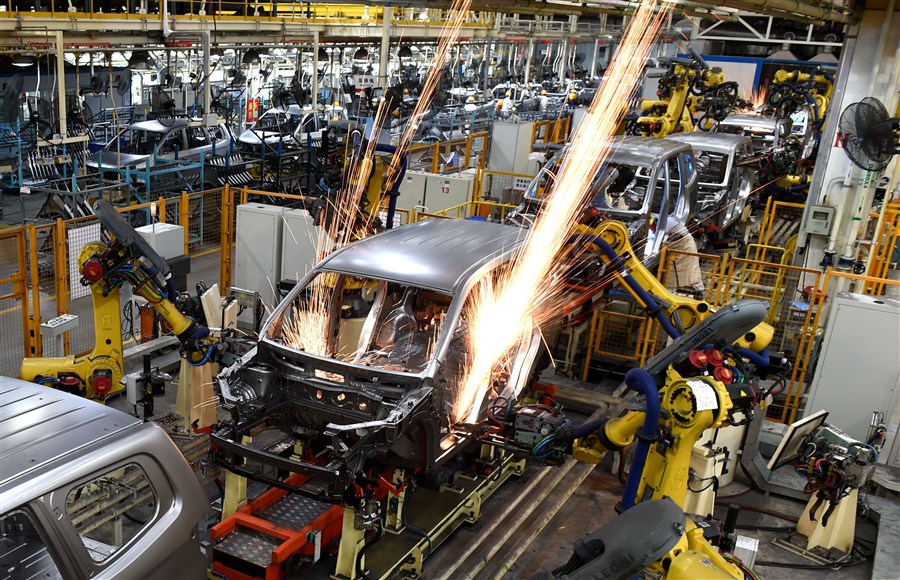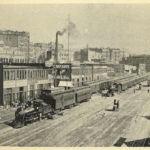
Nafta automotive industry mexicoAutomotive associations seek a North American agreement. NAFTA was very first signed by President George H.W. Bush in 1992, ratified, signed once again by President Bill Clinton in 1993 and came into force in 1994. Essentially, it established a free trade area among Mexico, Canada and the US by cutting tariffs and customs barriers with the purpose of producing organizations in these regions globally competitive. Of all the industries it benefited, automotive was one particular of the biggest.
A Friday deadline set by the Trump administration to strike a deal renegotiating NAFTA came and went, with talks set to resume this week. One region of the trade deal concerns automobiles, which are manufactured by way of a complicated net of components suppliers and staff in Canada, the U.S. and Mexico. Paul Eisenstein is publisher of It’s a internet site that covers the auto sector. And he joins us now. Paul, welcome to the plan.
Because of NAFTA, domestic U.S. automakers have been in a position to deploy their provide chain across North America, creating reduce-value vehicles and components in Mexico even though concentrating larger-end production right here in the United States. The result has been a U.S. auto sector that is able to provide more cost-effective and greater high quality automobiles and trucks to American households whilst competing a lot more efficiently in worldwide export markets. In recent years, U.S. exports of motor automobiles have topped two million for the very first time.
But Outcomes Might Be Mixed Comparable Newsnafta impact on canada auto industry
nafta automotive industry mexicoMexico is holding onto its position as a top-ten international automotive manufacturer and exporter despite a range of challenges, such as the new United States-Mexico-Canada Agreement (USMCA), the occurrence of extreme weather events and a worsening domestic security circumstance. The Trump administration also desires North American-built automobiles to have much more parts from Canada, the US, and Mexico general — at least 75 percent, up from the existing 62.five percent requirement in order to qualify for NAFTA preferences — and for at least 70 % of the core parts to be produced from far more North American steel and aluminium.
Taking location at the exact same time as a host of other international trade negotiations getting pursued by the Trump administration, bilateral talks in between the US and the two other NAFTA signatories have reached different stages. A recent tentative agreement with Mexico has put stress on Canada, which has but to come to an agreement with the US. NAFTA reportedly accounts for the majority of the three countries’ combined US$1tr annual trade.
President Trump has signaled his intention to withdraw from NAFTA or to renegotiate key provisions of the agreement. NAFTA has contributed to the growth of integrated automotive production and supply networks within the North American area, and substantial alterations to the tariff structure will have key ramifications for automotive producers and suppliers. These ramifications range from the automobile makers’ potential to provide an inexpensive mix of autos consumers demand, to the capacity to support supply chain needs with globally price-competitive raw components as effectively as merchandise that might not have any sources within the United States.
NAFTA Is Dead! Lengthy Reside NAFTA!nafta effect on canada auto industry
auto industry relieved by nafta 2.0 but results may be mixedOn September 30, 2018, a month soon after the U.S. and Mexico moved toward replacing the North American Totally free Trade Agreement (NAFTA), Canada joined to make a new continental trade agreement. Even though there are often possibilities to increase the effectiveness —a wholesale withdrawal from NAFTA could set in motion a series of unintended consequences that would constrain future development of the U.S. automotive market. This briefing outlines the rewards of NAFTA to the automotive market, buyers, and the economy as a entire, as properly as the potential consequences if the U.S. had been to unilaterally withdraw from NAFTA.
Trade negotiators from the 3 North American nations have been meeting for a lot more than a year now, attempting to update the agreement, with threats all the while from President Trump to merely abandon NAFTA entirely if the US can’t get a far better deal. The deal at present being floated, though, has a lot of in the automotive world feeling shaky, worried that changes could upset the flow of auto parts crisscrossing the globe.
A U.S. auto and parts business group that advised Lighthizer wrote to U.S. trade officials a couple of days ago that the negotiated auto rules had been workable and manageable.” The group’s bigger concern lately was the possibility that Canada could be excluded from the deal following the U.S. and Mexico currently had come to terms in late August. Trump had threatened to freeze out Canada, which would have been hugely disruptive due to the fact automakers have developed an in depth North America-wide supply chain considering that NAFTA took effect in 1994.
North American Free of charge Trade Agreement (NAFTA)nafta automotive industry
auto industry relieved by nafta 2.0 but results may be mixedAutomotive associations seek a North American agreement. Auto trade associations representing Basic Motors Co Toyota Motor Corp , Volkswagen AG , Hyundai Motor Co , Ford Motor Co and practically every single other main automaker, are element of the coalition dubbed Driving American Jobs” and backing an advertising campaign to convince the White Residence and voters that the agreement has been critical in boosting U.S. automotive sector production and jobs.
Far more worrying for US companies is the threat of leaving the planet trade organisation (WTO). Also, in July, news website Axios got hold of a leaked draft of a Trump administration bill that said the US was preparing to abandon WTO guidelines. As Axios pointed out, this would give Trump the potential to throw the MFN prices out the window and impose whatever tariffs he wanted. With a gun like this aimed at the Canadian and Mexican negotiators, it really is effortless to think they might be more amenable to the NAFTA proposals. There is tiny purpose to believe the draft bill (called, improbably, the United States Fair and Reciprocal Tariff Act, or US FART Act…) will be passed by Congress, but its existence wasn’t denied by the White Property.
EISENSTEIN: No. It really is BMW down in Spartanburg, S.C. Mercedes, which has a plant in Alabama, is close behind. Honda, which has operations all more than the Midwest, is yet another major automotive exporter. And that is element of the complete globalization of the auto business. Here’s where the United States wins. In some circumstances, we have plants like that BMW factory that become the sole source for certain models that go all more than the globe – in this case, the X5 crossover utility car. And BMW and Ford have both stated that they may have to cut back investments and production if we see a tit-for-tat trade war create.




